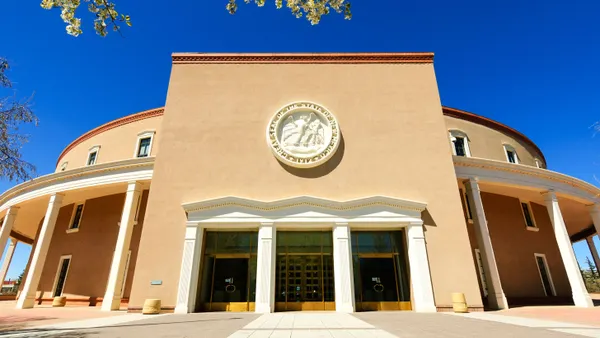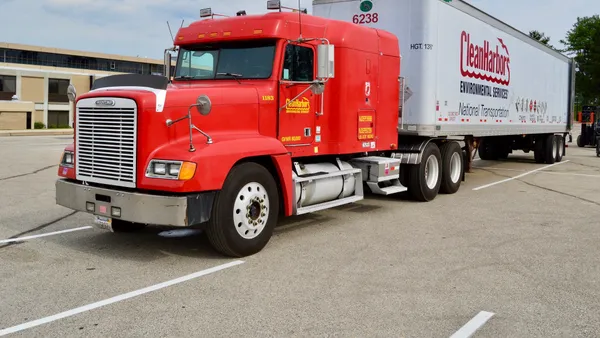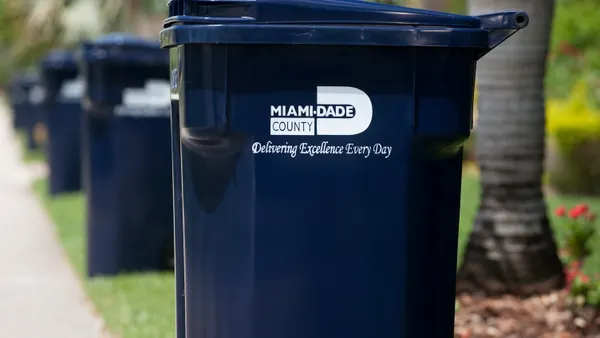Dive Brief:
- The U.S. Conference of Mayors (USCM) energy committee adopted a resolution this week to support a goal of cities using 100% renewable energy by 2035. The resolution's definition of "renewable energy" excludes fossil fuels, nuclear, new large-scale hydroelectric developments and "incineration of municipal and medical waste."
- The Energy Recovery Council (ERC), a waste-to-energy trade association, sent a letter to the committee chairman on June 20 asking him to "reject the resolution in its current form." The letter recommended that the committee either including new language for cities to choose their own definition of renewable, or striking the section on renewable definitions entirely.
- A separate resolution was also adopted by the same committee this week that supported reauthorization and full and dedicated funding of the federal Energy Efficiency and Conservation Block Grant Program. That resolution included language about how local governments had achieved emissions reductions "through re-utilization of resources, reduction of energy consumption, and improving the environment through waste reduction and recycling programs, encouraging waste-to-energy technology, and capturing methane in landfills..."
Dive Insight:
The adoption of this renewable energy resolution was hailed by environmental groups such as the Sierra Club and was covered in a range of publications. This and other non-binding environmental resolutions from the conference's annual meeting in Florida have been receiving even more attention than usual in light of President Trump's stance on climate change. Aside from a HuffPost story that first reported the ERC's letter last week there has been minimal attention on how these resolutions pertain to the waste industry.
That story said the ERC's letter, and a related email asking its members to contact members of the USCM energy committee, "...[threatened] to kneecap the biggest attempt yet to get cities to reject President Trump’s Paris accord withdrawal." ERC President Ted Michaels told Waste Dive he viewed this as a mischaracterization of their efforts.
"We certainly support an active carbon reduction program. We supported the Clean Power Plan," he said. "The Clean Power Plan treated waste-to-energy appropriately as a greenhouse gas mitigating technology. So the idea that we're in any way trying ot stand in the way of cities adopting renewable energy or tackling climate change issues is farcical."
Michaels said he was surprised to see WTE singled out in the resolution language because it was included in the other block grant resolution and was part of the 2005 U.S. Mayors Climate Protection Agreement, which is still being cited today. A representative from the USCM energy committee confirmed that the 100% renewable energy resolution had been adopted in its original form with no amendments, but provided no further clarification on whether that signified a change in policy on WTE.
In addition to major industry companies such as Covanta and Wheelabrator, the ERC also represents 26 municipal members. Though Michaels said this new resolution "has no impact on the marketplace," he said it was still important for the cities that do rely on WTE facilities to have a clear future.
"We just want them to make sure that the mayors that have invested in waste-to-energy already or plan to do so aren't disadvantaged in any way by the investments that they may make."
The 77 operational WTE facilities in the U.S. account for a small portion of country's energy supply, and are projected to grow at a much slower rate than renewable energy sources such as wind, solar or biogas. It's widely recognized that the best potential for WTE expansion is overseas due to high capital costs, low landfill tip fees in many regions of the U.S. and community opposition in others.
At the same time, environmental groups in Massachusetts, Maryland and elsewhere are actively working to shut down facilities that are currently operational. Yet many other municipalities also rely on WTE facilities to preserve local disposal capacity or reduce the amount of material that has to be exported to distant landfills. This new set of USCM resolutions, whatever they end up meaning, aren't expected to tip the scales on WTE acceptance one way or another. Though they provide another indication that the U.S. is still nowhere near adopting the technology on as wide of a scale as seen in many European countries or China.











